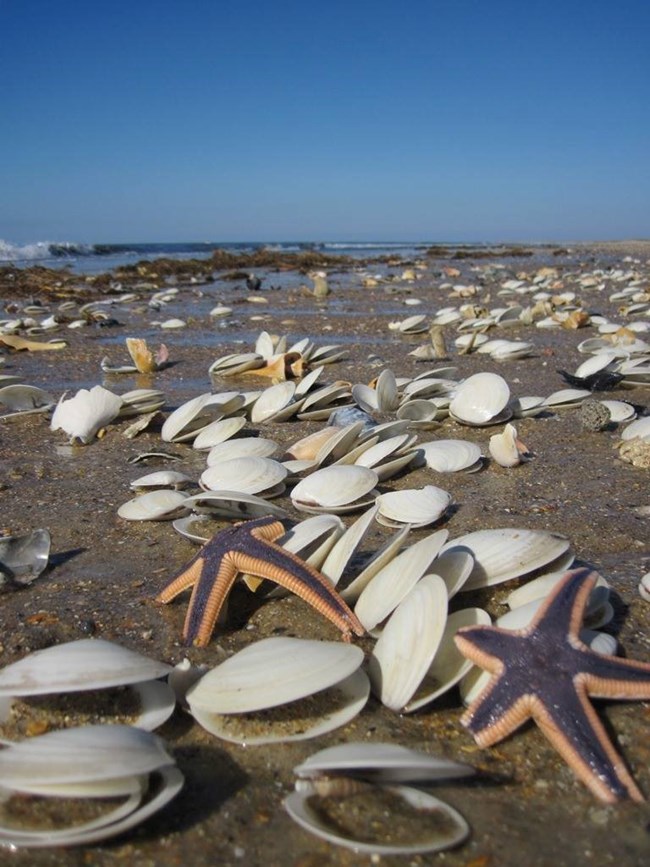Learn about NRCAs
The Natural Resource Condition Assessment (NRCA) Program provides framework, funding, and publishing support to parks to aid in the synthesis and documentation of natural resource conditions. Condition assessment reports are a tool to describe selected park resources, and record a snapshot of their current condition, identify trends, and identify potential or current threats and stressors. Understanding the condition and trend of natural resources is key for parks and NPS planners to appropriately prioritize and allocate stewardship resources.

NPS Photo
Traditional NRCA Report: 2017
In order to better understand the natural resources and processes within Cape Lookout National Seashore, a Natural Resource Condition Assessment was written and published in 2017. NPS staff discussed the greatest management needs in the National Seashore area, and created a list of 20 resource topics to be assessed:
- Adjacent human population impact |
- Wilderness condition (Shackleford Banks) |
|||||
- Geology and soils, including sea-level changes |
- Air quality |
|||||
- Surface water quality |
- Soundscape |
|||||
- Surficial sediment quality |
- Fish |
|||||
- Groundwater supply |
- Herpetofauna |
|||||
- Vascular flora |
- Birds |
|||||
- Benthic estuarine/marine macroinvertibrates |
- Mammals |
|||||
- Lightscape |
- American oystercatcher (sentinel species of concern) |
|||||
- Feral horses |
- Piping plover (sentinel species of concern) |
The overall condition of nine categories was rated as good (wilderness condition, soundscape, lightscape, surface water quality, surficial sediment quality, birds, American oystercatcher, sea turtles and feral horse population); eight were in fair condition (adjacent human impact, visitation, air quality, groundwater supply, benthic/marine macroinvertebrates, fish, herpetofauna, and piping plover); and three were in poor condition (geology and soils, vascular flora, mammals). Nearly all of the fair and poor conditions were strongly influenced or controlled by external forces that are not possible for the National Park Service to control. This assessment can function as a valuable resource for NPS staff and management by enabling rapid communication about the pressing need to improve protection of the natural resources at this seashore, which is a major natural wonder of this nation.
For other reports and natural resource datasets visit the NPS Data Store.
Source: NPS DataStore Collection 7765 (results presented are a subset). To search for additional information, visit the NPS DataStore.
Last updated: June 24, 2022
